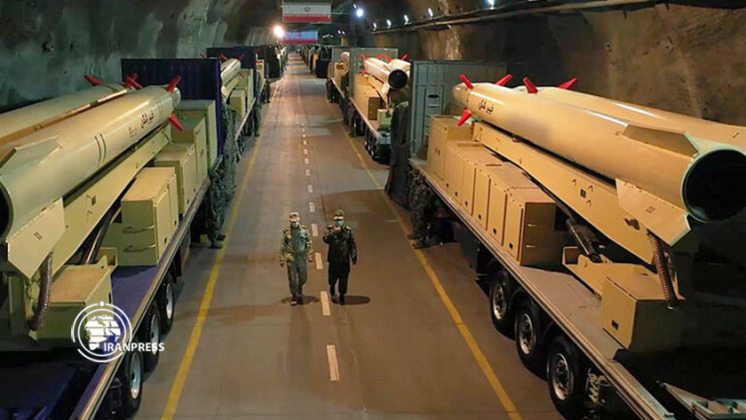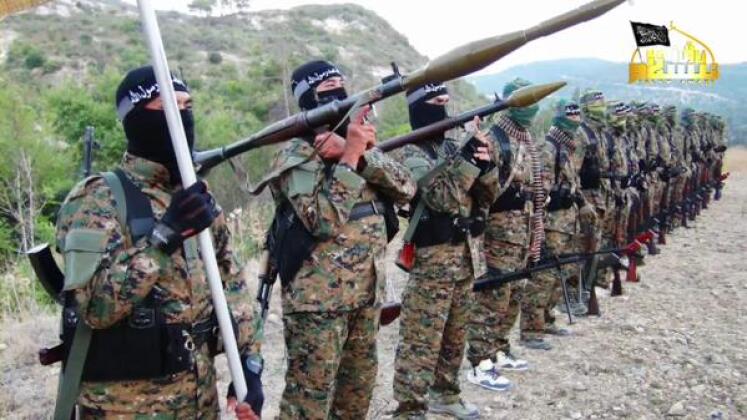News
Turkish-Backed Chinese Terrorist Group Targeted By Iran’s Advanced New Ballistic Missile
On January 15 the Iranian Revolutionary Guard Corps (IRGC) made its first combat deployment of the Kheiber Shekan medium-range ballistic missile to strike positions of the East Turkestan Islamic Party jihadist group in Syria. The attack was launched in response to the militants’ alleged culpability for terrorist attacks inside Iran on January 3 – namely the bombing of a commemorative ceremony marking the assassination of IRGC commander in chief Qasem Soleimani which caused close to 300 civilian casualties. The new missile used to target the militants carries a warhead with an estimated 800kg weight and has a long engagement range estimated at 1450km, with the attack having seen missiles launched 1,230 kilometres making it the longest ranged ballistic missile strike in Iran’s history. The IRGC first gained the capability to engage targets at such ranges when it acquired the North Korean Rodong-1 missile in the late 1990s, which had a similar range and warhead size, with the new Kheiber Shekan missile benefiting from a more compact and easily movable design.
The Kheiber Shekan’s deployment time is considerably shorter than its Korean-designed predecessor just 12 minutes due to its use of a solid fuel composite. At 10.5 metres long it is also approximately one third shorter. The missile’s precision is further enhanced by the ability to adjust its trajectory in mid-flight while its re-entry vehicle is in space, which is a capability few ballistic missiles have and is thought to make it among the most precise in the world from the medium range category. Engagement ranges of 1200-1500km have long been considered vital to the IRGC to facilitate strikes against Israel – and before 2003 also against Iraq from deeper within Iranian territory. The launch of four medium range ballistic missiles was thus widely interpreted as a show of force aimed primarily at Israel, but also at NATO member Turkey and both countries’ Western security partners which have multiple military facilities across the region. Three aspects of the missile launch including its range, its high precision, and the missile class’ deployment from well secured underground bunkers, make the newly demonstrated capability particularly concerning for Israel and the United States as well as their security partners such as Turkey.

The East Turkestan Islamic Party targeted in the Iranian missile strike is recognised by the United Nations as a terrorist organisation, and is comprised primarily of Turkic militants from the Chinese Uyghur ethnic minority. The militants have for decades with extensive support from the Turkish state waged a campaign to expel other ethnicities from China’s westernmost province of Xinjiang and establish a jihadist state similar to that seen in northeast Syria today. The militants have been funnelled from Afghanistan and China to Syria through Turkey for over a decade with the support and funding of Turkish intelligence services, which have since 2011 played a leading role in efforts to overthrow the Syrian government. Syria’s Idlib governate where the jihadists are based straddles the Turkish border and is the primary hub of Islamist terror operations not only in the country, but by many estimates in the wider world. U.S. envoy to the coalition fighting the Islamic State, Brett H. McGurk previously highlighted that “Idlib Province [in Northern Syria bordering Turkey] is the largest Al Qaeda safe haven since 9/11,” with jihadist militant forces based there numbering in the high tens of thousands.

Idlib’s status as a jihadist enclave and safe haven for militants within Syria’s borders has been a direct result of Turkish military interventions on the behalf of terror groups based there. A major Syrian-led offensive, in conjunction with the Iranian-aligned militia Hezbollah and benefitting from limited Russian air support, was notably set back in early 2020 when Turkey provided extensive air and artillery support to target Syrian positions and protect militants on the ground. While Ankara has continued to identify the overthrow of the Hezbollah-allied Syrian government as one of its policy objectives, Syria’s status as Iran’s closest state ally in the region ensuring Tehran maintains a strong stake in supporting Damascus and supporting counterterrorism efforts within Syrian borders. With the Chinese-origin jihadists in the East Turkestan Islamic Party having for decades posed a serious threat to Chinese interests, and carried out multiple terrorist attacks against Chinese civilians within the country, the Iranian strike itself comes in the context of growing security cooperation with Beijing. Alongside Israel, Turkey is expected to be among the most threatened parties by the attack, with Turkish special forces and other personnel interspersed with Islamist militias throughout Idlib and having been integrated into Islamist militia groups operating in Syria since close to the outbreak of the war in 2011.












